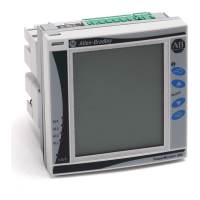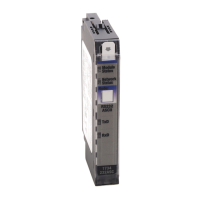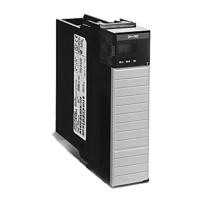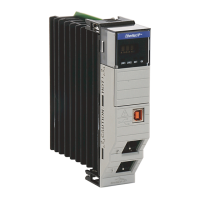Publication 1757-RM810A-EN-P - May 2002
Functional Blocks 3-3
Auxiliary Blocks
AUXCALC (Auxiliary Calculation)
Description Lets you write up to eight for computing a Process Variable (PV) value.
Function • Each expression can contain any valid combination of inputs, operators and functions and may perform arithmetic
or logic operations, test conditions, etc.
• Status information is made available for input as well as the expression results.
• You can assign the result of an expression, a status, or an input to PV and PVSTS parameters which are then
processed like the result of any other Auxiliary function block.
Inputs • Accepts up to six optional inputs (P [1] to P [6]) - none are required.
• No inputs are required
• All inputs must be fetched from other function blocks.
• The number of process input connections are equal to the number of inputs; the default is 1.
• Configure P inputs contiguously (without breaks) in arrays.
Outputs Produces these outputs according to the values you assign to them.
• PV and its status PVSTS, as well as a Boolean flag, PVSTSFL.BAD, to indicate to other function blocks, that this
block’s PV status is bad.
• Up to eight expression results (C [1] to C [8])
Operators and
Functions
Table 3.A on page 3-4 lists the expression operators and functions supported by this block.
Parameter
Identification
You must specify a parameter by its full tag name. For example, “CM25.PumpASelect.PVFL”, or
“CM57.PID100.MODE”.
In effect, tag names allow expressions to have an unlimited number of inputs and work with any data type.
Expression
Rules
• Must include tag.parameter name for P inputs in the expression and enclose identification number in brackets
instead of parenthesizes. For example, CM151.AUXCALC BLOCK.P [1] * CM151.AUXCALC BLOCK.P [2] is valid.
• Expressions cannot contain an assignment operation (a colon and equal sign with the current syntax) For example,
“CM1.PID1.MODE:=X [1]” is invalid.
• Each expression produces a single value (arithmetic or logical which is automatically stored in a “C” parameter.
For example, if you write four expressions, the result of the first expression is stored in C [1], the result of the
second is stored in C [2], etc. You can use these results, by name, in succeeding expressions. In this example, you
could use C [1] as an input to expressions 2, 3, and 4.
• You can mix and nest all operators and functions (including conditional assignments) in any order as long as types
match or can be converted.
• You can use blanks between operators and parameter names, but they are not required.
• You can use all data types in expressions, including enumerations. They are all treated as numeric types.
• You must configure calculator expressions contiguously (without breaks) in the arrays.
Parameters C [1..8]
CONFIGCODE [1..8]
CONFIGDESC [1..8]
CONFIGSTS [1..8]
CSTS [1..8]
DESC
EXECCODE [1..8]
EXECDESC
EXECDESC [1..8]
EXECSTS
EXECSTS [1..8]
EXPR [1..8]
EXPRPCODE [1..8]
ORDERINCM
P [1..6]
PSTS [1..6]
PV
PVFORMAT
PVSRC
PVSTS
PVSTSFL.BAD
PVSTSFL.MAN
PVSTSFL.NORM
PVSTSFL.UNCER
PVSTSSRC
PVVALSTS
SRC
Spare Allen-Bradley Parts
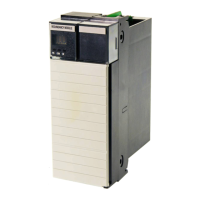
